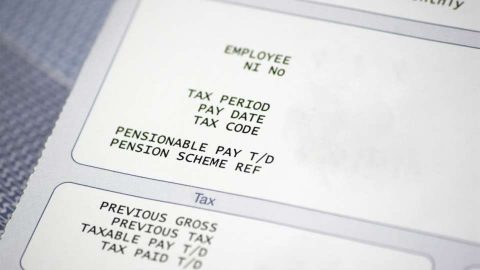Coronavirus loans: Tips for application success
A live poll found that 74% of viewers consider the loan scheme a bureaucratic “waste of time”. McPherson understood that it is “one of the most complicated schemes trying to be implemented within days” and tracked how it had evolved since Budget day.
“When it was announced, it had a great honeymoon period for a few days when people were saying that the Chancellor absolutely understood that small businesses are struggling.”
However, the initial excitement turned to disappointment after the first few applications. “As it’s always the case, the devil is in the detail,” he said.
In the webinar, McPherson then turned to the nuts and bolts of the loan scheme and offered the following tips for a successful application:
-
Stick with the bank that you are with at the moment. Banks are looking after their own customers first. If your client is with Barclays, go to Barclays before you go to anyone else.
-
Make sure your application is complete and that you have provided all the information that is required. Make sure you understand the questions that are being asked and that you answer them correctly and fully.
-
Apply only for what you need to mitigate the effects of the coronavirus business interruption.
McPherson said the shorter term of the loans was the main problem accountants and their clients were seeing. Many of those who were used to going to a high street bank and getting a loan for 10 to 15 years are now finding that their requests are being rejected because of affordability concerns.
The reason, McPherson said, is that these are six-year loans, with the first year interest-free. Therefore, banks were calculating affordability over five years, instead of the usual 10-20.
Paul Layte from Next Level Business said his clients, too, had experienced the initial disappointments McPherson described. “Our applications pre-3 April had a 0% success rate,” he said.
When Layte compared notes with fellow accountants they found that none of the 200 applications they had prepared had been successful. The estimated overall success rate was 0.8%.
“All of this was fed back to representatives of the DTI, British Business Bank and various other bodies,” he said.
Layte said clients were being offered interest rates in the “mid-teens to mid-twenties” with personal guarantees as collateral. A lot of them weren’t willing to accept loans on those terms.
However, after the Chancellor announced tweaks to the loan scheme on 3 April, banks started to take a different approach.
“We put our first application in under the new guidance, and within four days Lloyds approved it. It was £750,000 with no personal guarantees, there was a debenture on the business (because the loan was above £250,000), but the interest rate was 3%,” he said.
“We’re now starting to see a much more reasonable offer rate and overall packages from banks. The message has been heard that the original scheme was not working effectively.”
Layte was optimistic, after seeing a higher number of approved applications since then. But he agreed with McPherson on the importance of ticking all the right boxes.
“You don’t want to wait a long time for a decision and then go back to the queue because you’ve got to add more information,” Layte said.
Based on his experiences with banks over the past month, Layte recommended putting together an information package for banks with:
-
Three years of statutory accounts
-
12 months’ business bank accounts
-
Up to date management accounts for the whole year or the last full quarter
-
Aged debtor/creditor listings
-
Confirmation of existing outstanding debt
-
Client personal statement showing net worth and incomes/outgoings.
“Something that really helps managers make a decision is to see how Covid-19 has affected the business that is applying for the loan,” said Layte.
“What was the impact of the crisis on the business? What has business done to address the situation, for example VAT deferral or furlough? Banks are expecting you to have taken advantage of all the other government support.”
Layte recommended setting out these details clearly with a few bullet points on one page and adding a 12-month cashflow forecast. “All of that as a package gives you the best chance of getting the bank in a lending position when you are at the front of the queue,” he said.
Though Layte thought the barriers to lending were being moved, we are now likely to experience a capacity issue, with banks struggling to get through applications.
“Banks need four to five hours internally to get through a loan application. They can do one to two a day maximum,” Layte said.
“Get the information in right the first time to give yourself a better chance so whenever you get to the front of that queue (and that queue is lengthening) you don’t have to go to the back again.”
The free AccountingWEB Coronavirus Q&A on the business interruption loan scheme can be viewed on demand here. Tune in next Wednesday, 23 April, for another session on payroll issues, the Coronavirus Job Retention Scheme and Self Employed Income Support Scheme with Kate Upcraft and Rebecca Benneyworth.













